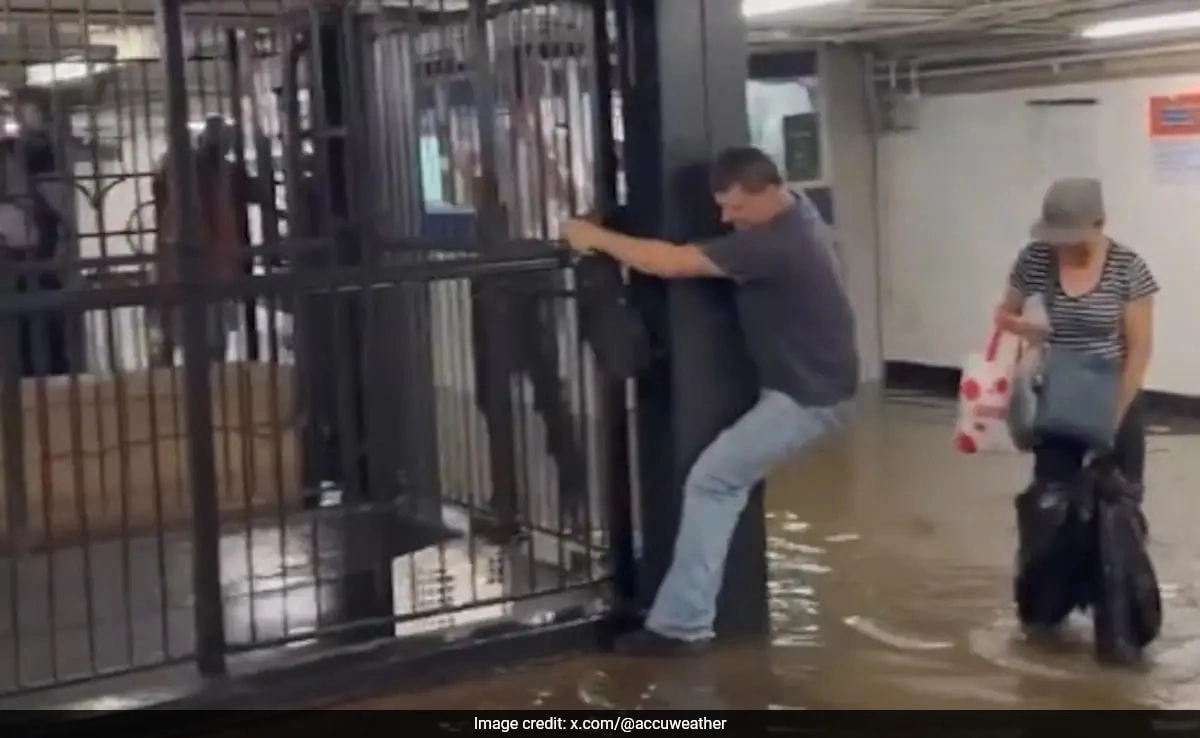In a dramatic display of nature’s fury, New York City recently experienced an unprecedented weather event that left the city grappling with severe flooding. Footage captured during this chaotic time showed cars entirely submerged beneath murky waters, a sight that highlights the intensity of the downpour. Streets transformed into rivers as rain overwhelmed the drainage systems, leading to widespread chaos across various neighborhoods. The flooding was so severe that emergency services struggled to respond to the numerous calls for help, as vehicles were trapped and residents found themselves stranded in their homes.
Above ground, the impact of the storm was equally devastating. Trains, a critical mode of transportation for millions of New Yorkers, were suspended as water cascaded into subway stations. Videos from the scene depicted torrents of water pouring down staircases and platforms, resembling waterfalls rather than transit hubs. The Metropolitan Transportation Authority (MTA) was forced to halt services, leaving commuters in a state of disarray. Many were left to navigate the flooded streets in search of alternative routes, while others simply waited in disbelief as the city they knew transformed into an aquatic battleground.
This weather event serves as a stark reminder of the increasing unpredictability of climate patterns and the challenges urban infrastructure faces in coping with extreme weather. As cities like New York contend with the realities of climate change, the need for resilient infrastructure and effective emergency response systems becomes ever more crucial. The flooding not only disrupted daily life but also raised questions about preparedness and the city’s ability to manage such catastrophic events in the future. As the water recedes and recovery efforts begin, residents and officials alike will need to reflect on the lessons learned from this extraordinary situation to better equip the city for what lies ahead.




